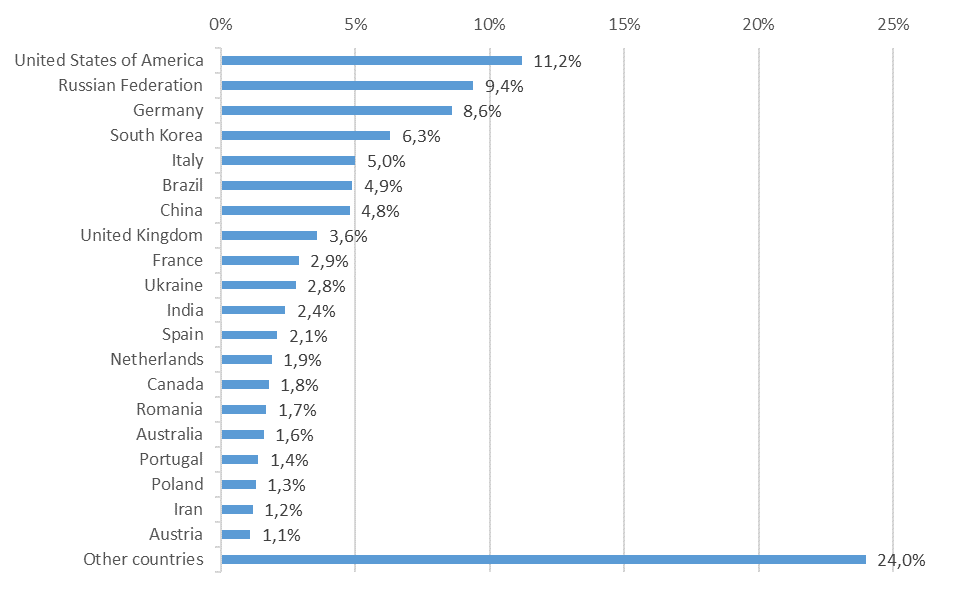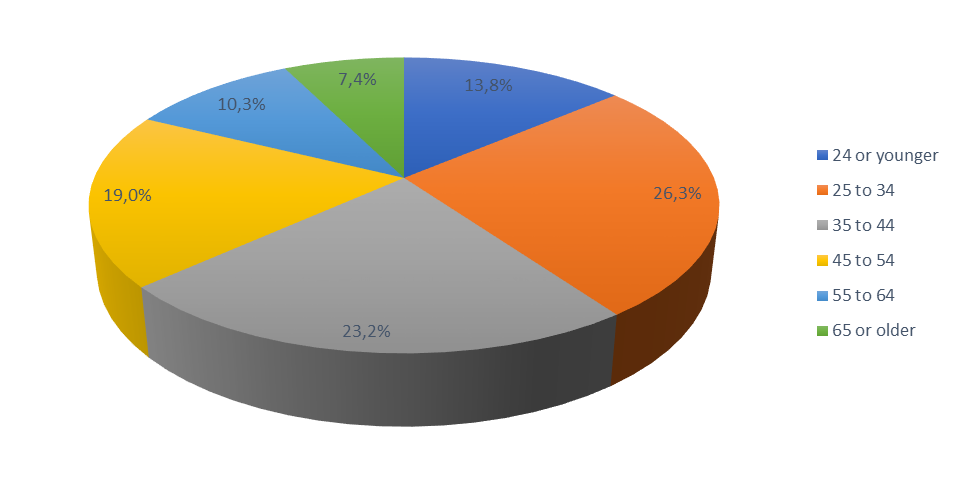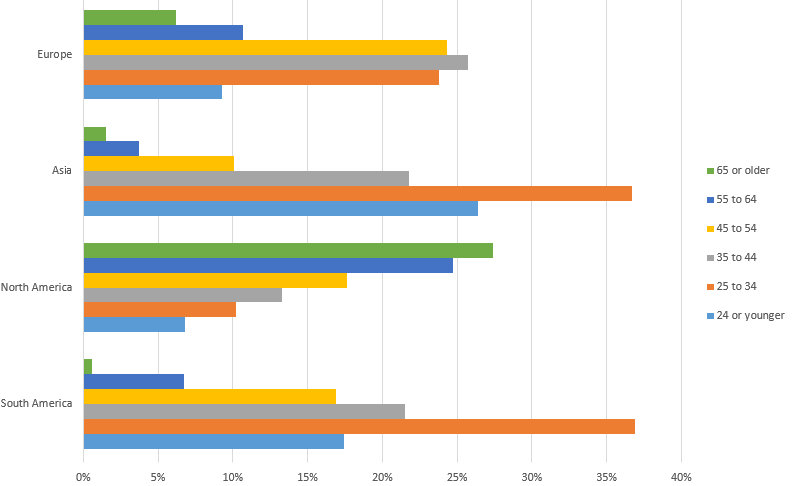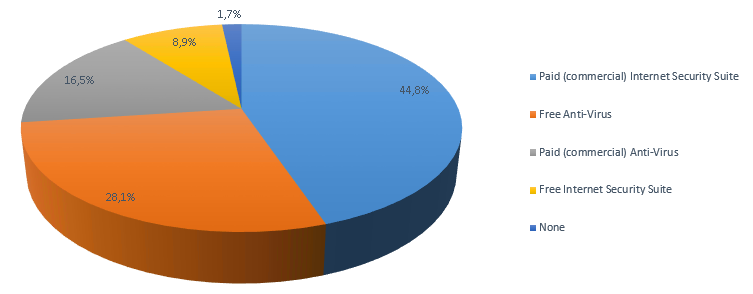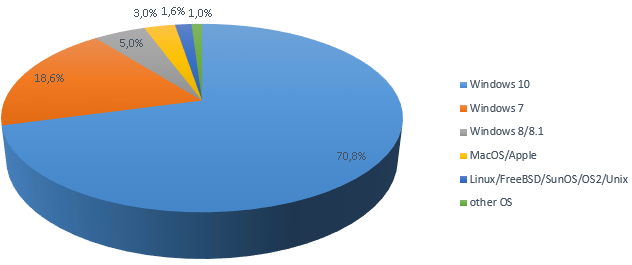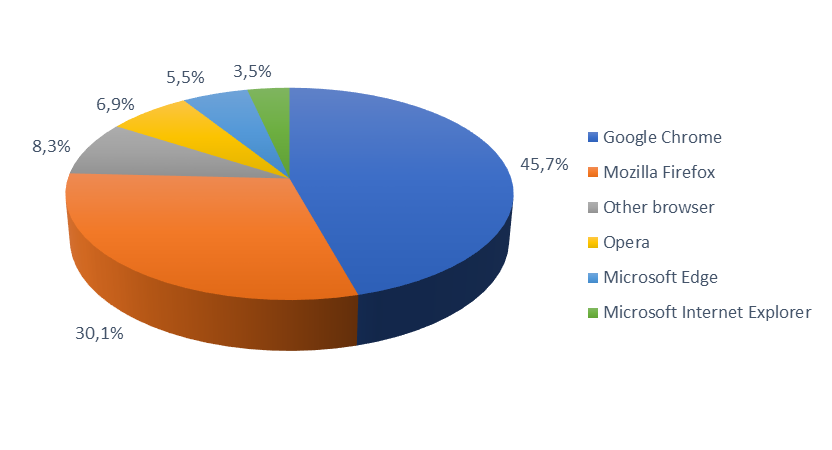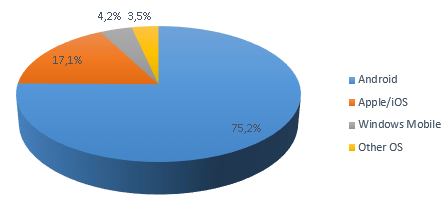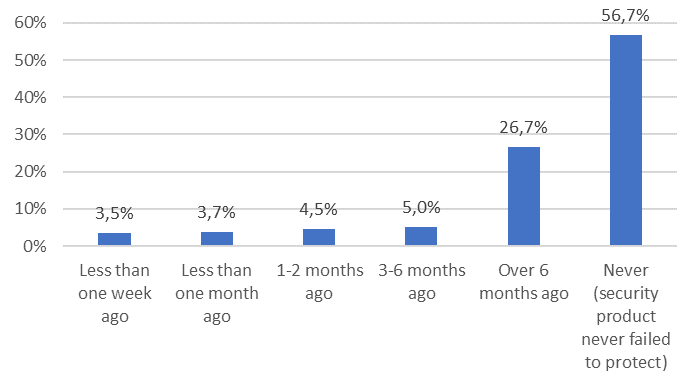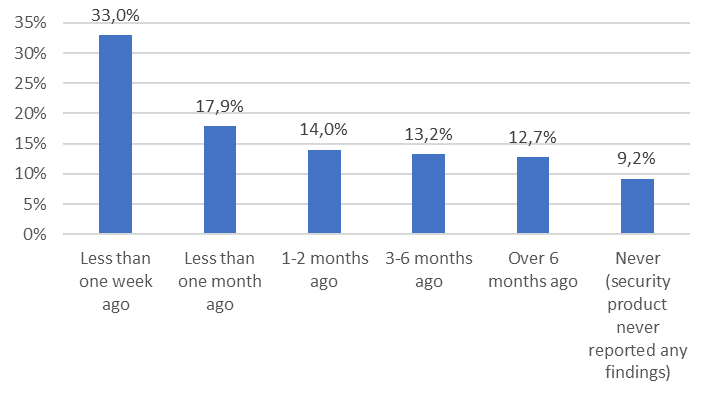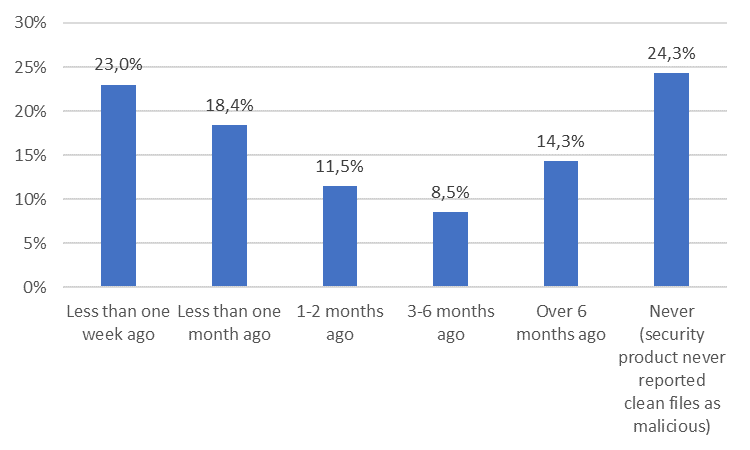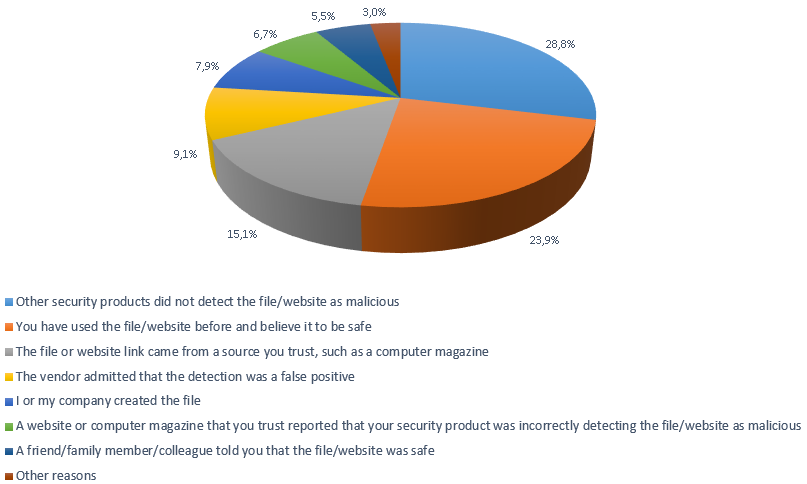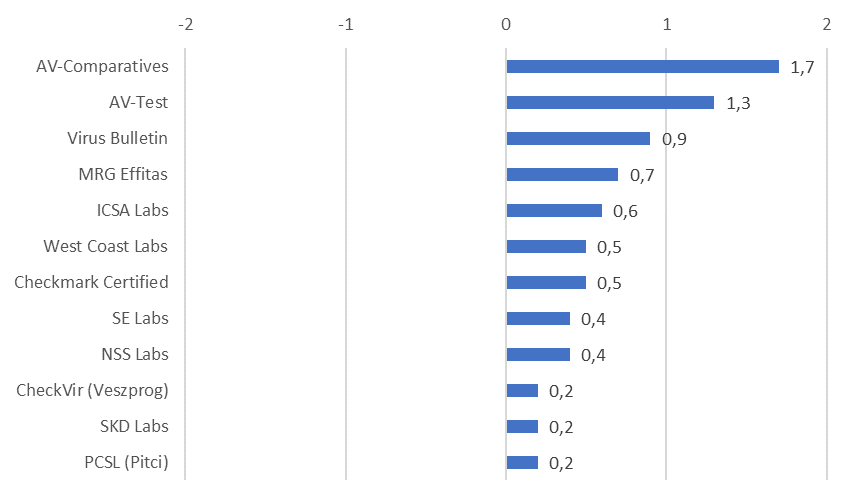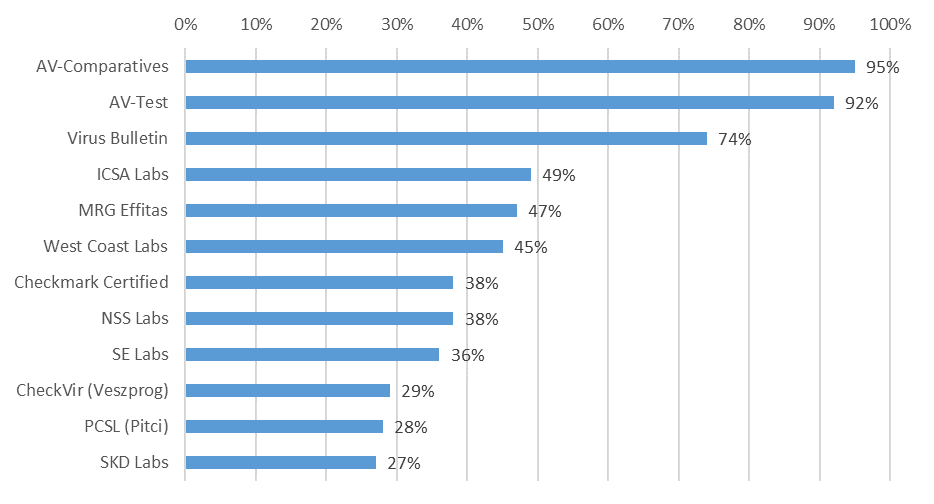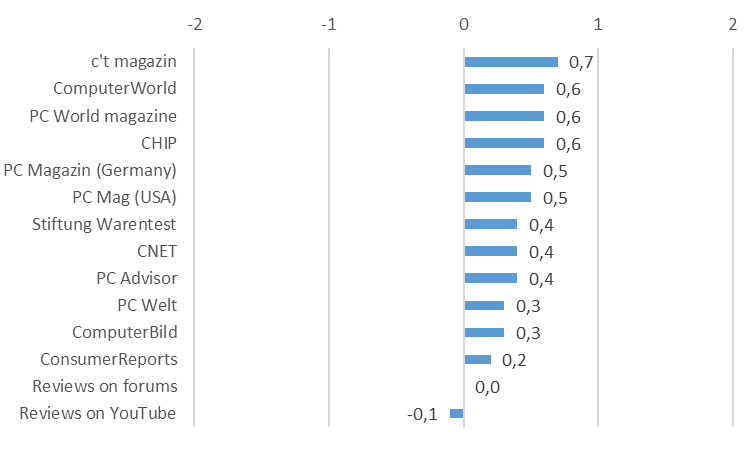We conducted our annual survey to improve our service to the end-user community. Respondents were asked for their opinions on various topics related to anti-virus software testing and anti-virus software in general. The results were invaluable to us. We would like to thank everyone who took the time to complete the survey. This survey can be downloaded as PDF from here.
IT Security Survey 2018
Survey Period: 20th December 2017 – 10th January 2018
Valid responses of real users: 2,769
The survey contained some control questions and checks. This allowed us to filter out invalid responses and users who tried to distort the results by e.g. giving impossible/conflicting answers. We were primarily interested in the opinions of everyday users. The survey results in this public report do not take into account the responses of participants who are involved with anti-virus companies.
The survey results are invaluable to us. This report contains the results of the survey questions.
Overview
Use of the Internet by home and business users continues to grow in all parts of the world. How users access the Internet is changing, though. The increase in the use of smartphones and tablets to access the Internet has continued, and this has resulted in a drop in desktop and laptop sales. With regard to attacks by cyber criminals, this means that their focus has evolved.
This annual survey of computer users worldwide focuses also on which security products (free and paid), operating systems and browsers are most widely used.
Survey methodology
Report results are based on an Internet survey run by AV-Comparatives between 20th December 2017 and 10th January 2018. A total of 2,769 computer users from around the world answered the questions on the subject of computers and security.
Prize draw
This year, to say thanks for taking part in the survey, we are giving almost 500 randomly selected participants a one-year license for a security product. The licences were kindly provided by their respective vendors: Adaware, Avast, Avira, Bitdefender, Emsisoft, ESET, F-Secure, G DATA, Kaspersky Lab, Panda, SafeDNS, and Trend Micro. Our thanks go to these manufacturers for making the licences available.
Key Results
Please note that all the points made below refer only to our survey participants, not the general public.
- Kaspersky Lab, Bitdefender and ESET are the three most popular desktop security products worldwide, and feature in the top three products on every continent with significant results.
- Bitdefender is the most popular mobile security solution in absolute number of votes, while Kaspersky Lab and ESET are the only two mentioned in the top four on every continent.
- Android remains by far the most popular mobile operating system, being used by three quarters of respondents. iOS is the only other mobile OS to reach double figures, at just over 17%.
- A majority of users (83%) were well protected in the last 6 months, having not suffered a malware infection in this period. Almost exactly a third (33%) stated that their security product had blocked malware within the last week, indicating how easy it is to encounter a threat.
- The number of users who rely on free desktop security software has risen slightly this year, standing at 37% of users. However, the share of users who pay for a security solution has not changed, as there has been a drop in the number of users without antivirus software, which is now down to 1.7%.
- Well over two thirds of this year’s respondents (70.8%) have moved to Windows 10, leaving Windows 7 with under a fifth of users (18.6%).
- Google Chrome is the most popular browser, with getting on for half of respondents (45.7%) using it. Mozilla Firefox accounts for a lot of the remaining users, with a share approaching a third (30.1%). Despite being built into the increasingly popular Windows 10, and being Microsoft’s recommended browser on this OS, Microsoft Edge is only used by 5.5% of users overall.
- As regards trustworthiness of reviews, forum and YouTube reviews both received low scores again, whilst all the computer magazines/websites/institutes achieved positive scores.
- Some of the 12 test labs we asked users about were much better known than others, with 95% having heard of AV-Comparatives, but only 27% recognising the least well-known lab. As regards user confidence, once again we are delighted to be voted the most trustworthy and reliable of the testing labs, and thank respondents for their confidence in AV-Comparatives.
We are grateful to everyone who completed the survey. The feedback we have gained will be used to ensure that our tests continue to grow in effectiveness and relevance. This enables manufacturers to further improve their products, benefitting both themselves and their users. We are very pleased to see our test results being quoted by other publications in their review of AV and Internet Security products!
All AV-Comparatives’ public test results are available to everyone at no charge at www.av-comparatives.org
The most widely used operating system amongst respondents is Windows 10, accounting for over 2/3 of the total OS usage. Windows 7 was the second most popular system, with almost 1/5 of participants using it. As in previous years, our survey respondents tend to use more recent versions of Windows than the general public (according to figures for all users provided by various metrics companies, such as NetMarketShare, Statista and StatCounter); these show Windows 7 as still being the most prevalent operating system, even if it is constantly losing market share. In North America, MacOS/Apple is used more than in the rest of the world, with about 10% market share.
In 2017, we issued our fourth review/test of Mac security products. This report is available here.
A list of Mac security products can be found here.
As shown in the diagram, Google Chrome is the most popular browser amongst survey participants worldwide, with almost half of the respondents using it. In second place is Mozilla Firefox. Even though more than 70% of survey respondents use Windows 10, only 5.5% of all participants use the Edge browser. Only 3.5% of survey participants still uses the Internet Explorer browser. As Microsoft’s browsers have a very low market share, we will continue to use Google Chrome as the browser for our Real-World Protection tests in 2018.
Android is the most popular mobile OS with our survey participants, accounting for over 75% of users worldwide. In North America, iOS is more popular than in other regions, accounting for over 30%.
In September 2017, we issued a report reviewing Mobile (Android) security products. This report is available here.
An overview of security products for Android can be found here.
Survey respondents clearly value independent tests very highly when it comes to choosing security software, with three quarter using these to select their security solution. Recommendations in online forums and from friends/family members then account for most of the remainder. We should point out that some of the forum members/family members/friends etc. may themselves consult independent test-lab results before recommending a product. 6.2% of users stick to the security solution that came with the computer or operating system (for comparison, it was 4.3% in the previous survey).
30.6% of respondents overall do not use any security solution on their mobile phones.
Worldwide, the ten most commonly used manufacturers of mobile security products are, in decreasing order: Bitdefender, Kaspersky Lab, ESET, Avast, Symantec, McAfee, AVIRA, Cheetah Mobile, AhnLab and Dr.Web.
The list below shows the 10 most popular mobile security manufacturers used by survey participants, according to continent. There were not enough responses from some regions to produce significant results. Therefore, Australia/Oceania and Africa are not shown.
| Europe | North America | Asia | South/Central America |
|
|
|
|
ESET was in the top three on all four continents with significant results, and Kaspersky Lab in the top four.
Major products for mobiles were reviewed by AV-Comparatives in a report in September 2017.
AV-Comparatives offers a free scan service (AVC UnDroid) to check Android apps for suspicious traits. It is located at http://www.av-comparatives.org/avc-analyzer/
Worldwide, the twelve manufacturers of anti-malware products for Windows platforms most commonly used by survey participants are (in this order): Kaspersky Lab, Bitdefender, ESET, Avast, Microsoft, Symantec, AVIRA, Emsisoft, Panda, F-Secure, Trend Micro and McAfee.
Comparison with 2017
On all 4 continents, the same 4 vendors take the top 4 places. These are (alphabetically): Avast, Bitdefender, ESET, Kaspersky Lab. Microsoft takes 5th place on 3 out of 4 continents, and 6th place in Asia. Three other manufacturers, (alphabetically) Avira, Emsisoft and Symantec, are in the top 12 on all 4 continents.
Differences between continents
The table below shows the twelve products most commonly used by survey participants, by continent:
| Europe | North America | Asia | South/Central America |
|
|
|
|
Below are the 15 most-requested consumer/home-user products.
- Kaspersky Lab
- Bitdefender
- ESET
- Avast
- AVIRA
- Symantec/Norton
- Microsoft
- Trend Micro
- Panda
- McAfee
- MalwareBytes
- F-Secure
- AVG
- Emsisoft
- G DATA
Below are the 15 most-requested business/enterprise products.
- Kaspersky Lab
- Bitdefender
- ESET
- Symantec/Norton
- Avast
- Microsoft
- Trend Micro
- McAfee
- F-Secure
- MalwareBytes
- Panda
- Sophos
- Emsisoft
- CISCO
- Fortinet
33% of the users stated that they encountered malware and that their security product successfully protected their system less than a week ago. About 13% of the users said that the last time that their security product appropriately warned of/protected them against malware was over six months ago. About 9% have never had any warnings from their security product.
The results of questions 12 and 13 together may provide some insight into the effectiveness of current security software.
Users had to rate various security product testing labs and institutes by giving a score from -2 to +2, where +2 meant reliable/trustworthy and -2 unreliable/biased. Note that not all respondents were aware of all the labs, so each lab was only rated by those who were aware of it. For more information, see next page.
Most of the above testing institutes are AMTSO members. SKD Labs and PCSL are Chinese labs. Checkmark Certified can be regarded as part of West Coast Labs. We also note that CheckVir did not publish new test reports since February 2016.
AV-Comparatives and AV-Test reached a mean score of 4 or higher. Together with Virus Bulletin, these are the three best-known AV testing labs in the world. We hope that our high rating is down to the carefully prepared methodology of our tests, meaningful number of samples, transparency, and freely available test reports, which describe the tests in detail. Our willingness to allow other publications to cite our results (subject to proper attribution) has also increases our visibility.
For products that are not tested by us, we recommend our readers to look at the tests done by other well-known testing labs or at least certification bodies. A list of some other testing labs can be found here.
Which are the best-known AV testing labs?
We asked which testing labs are known to the survey participants. Obviously, anybody who has seen our website, newsletter or social media accounts will be aware of AV-Comparatives. Consequently, for AV-Comparatives we removed the survey responses that came from via website, our newsletter and our social media accounts, to create a level playing field. Below you can see the percentages of participants that have heard of the respective labs:
Below the testing labs are ranked based on how well they are known on the various continents:
| Europe | North America | Asia | South/Central America |
|
|
|
|
Please note that not all the testing labs have the same testing focus. That is to say, some may test only business products, others only consumer products; some may only provide certification (i.e. simply verify that products reach a certain minimum level, without providing comparative data); some may limit their tests to products from a particular country or region, or in a certain language.
Users had to give a score from +2 to -2, where +2 meant reliable/trustworthy and -2 unreliable/biased.
Reviews on YouTube were regarded as the least reliable. There are a number of possible reasons for this. Firstly, most of the reviewers are effectively anonymous. Secondly, the reviews are typically focussed on user experience only. Furthermore, in many cases only one product is reviewed/tested, so there is no comparison. Of course, some reviewers may produce competent reports with integrity, and provide a good overview of the user interface and/or other aspects of the products. However, other reviewers may base their opinions on e.g. a one-off good or bad experience with a particular product. Some will even deliberately deceive readers in order to promote one product, or malign competitors, for their own commercial interest in. The same applies to reviews and opinions expressed on forums and blogs. In fact, there are paidbloggers, forum/YouTube posters etc. who provide biased or fake Amazon reviews and feedback.
AV-Comparatives suggest that some antivirus-related YouTube channels provide honest and relevant videos that are worth watching. We will post any that we find on our weblog (http://weblog.av-comparatives.org/).
Copyright and Disclaimer
This publication is Copyright © 2018 by AV-Comparatives ®. Any use of the results, etc. in whole or in part, is ONLY permitted after the explicit written agreement of the management board of AV-Comparatives prior to any publication. AV-Comparatives and its testers cannot be held liable for any damage or loss, which might occur as result of, or in connection with, the use of the information provided in this paper. We take every possible care to ensure the correctness of the basic data, but a liability for the correctness of the test results cannot be taken by any representative of AV-Comparatives. We do not give any guarantee of the correctness, completeness, or suitability for a specific purpose of any of the information/content provided at any given time. No one else involved in creating, producing or delivering test results shall be liable for any indirect, special or consequential damage, or loss of profits, arising out of, or related to, the use or inability to use, the services provided by the website, test documents or any related data.
For more information about AV-Comparatives and the testing methodologies, please visit our website.
AV-Comparatives
(February 2018)






